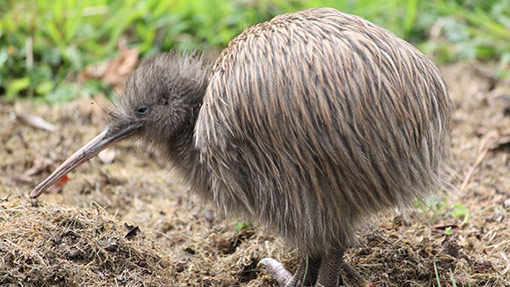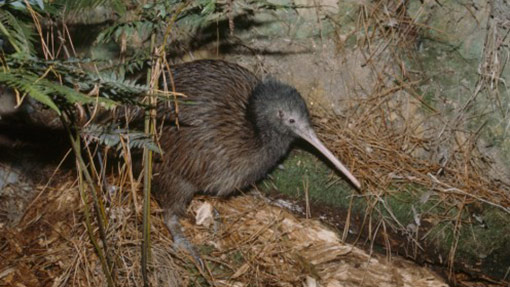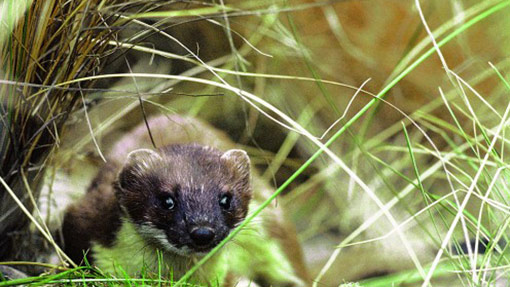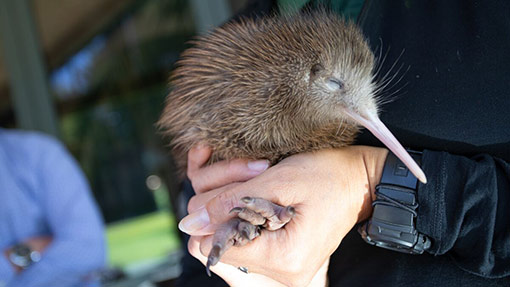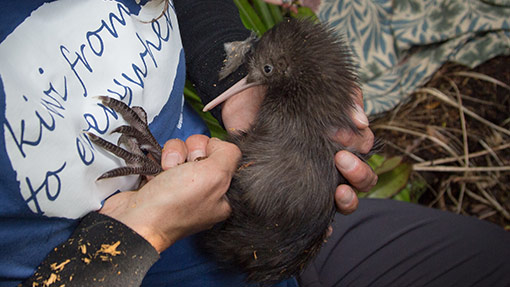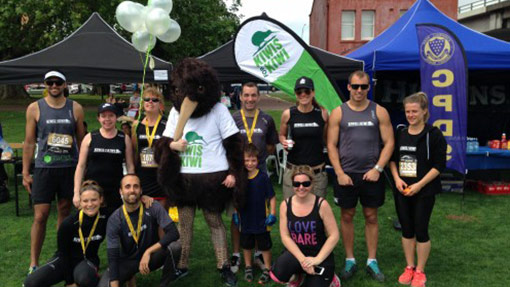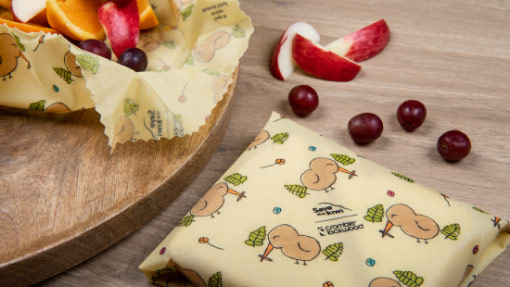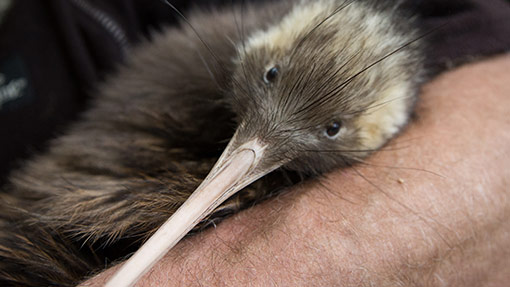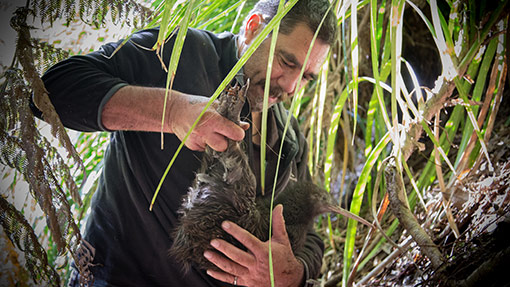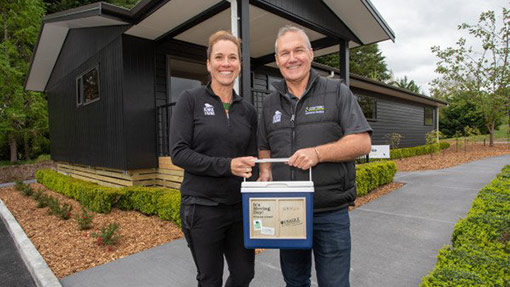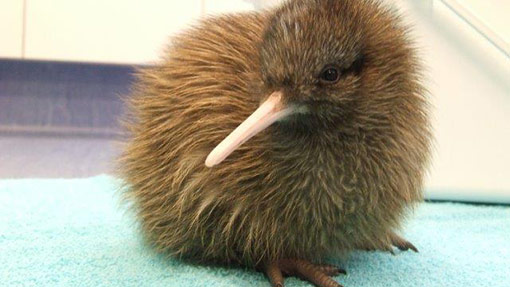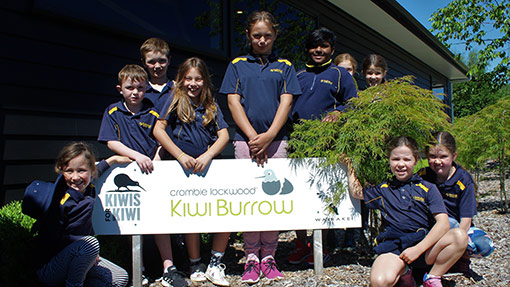Miro Parsonson hasn’t heard a kiwi calling near his family home for at least a decade. As a child, the 29-year-old remembers falling asleep to the shrill calls of kiwi in the forest that surrounds the home his parents built from scratch deep in the Far North’s Honeymoon Valley.
“Growing up, we always heard kiwi around the house,” he says. “As kids, their calls were really part of our night-time routine. I guess we got used to it because they were always there … until they weren’t.”
Honeymoon Valley is an area of forest and farmland nestled between Te Tai Tokerau’s Kaitaia, Doubtless Bay and the Hokianga. It’s remote and off the beaten track – you only head into the valley if you have a reason to be there – and many homes in this part of the world are off-grid and self-sufficient.
As I turn off State Highway 10 at Taipa and make my way towards Peria, Honeymoon Valley unfurls ahead of me. As I get closer, its vastness and remoteness surprise me. I suppose I wasn’t expecting quite so much – so much forest, so much green, so much silence, so much nothingness, but equally so much everything.
But in the middle of the nothingness is a presence, an aura, a sense of expectation. I weave around the gravel corners, pulling over so the occasional car going the other way can get past. I drive through a tunnel of trees and bamboo. There are paddocks here and there, houses nestled between trees. At a cattle stop, a ‘Kiwi live here’ sign greets me. At the next, three horses stand in the middle of the road; one doesn’t want to get out of the way so I roll my window down, somehow expecting my “Excuse me, horsie” plea will coax it out of the way.
The horse lazily strolls off the road. I get the sense it’s only moving because it has decided to, not because I made it. I drive over a narrow stone bridge and through a warbling creek, wondering if it would have been a torrent during the previous week’s torrential rain. Considering the vastness of the landscape here, I presume people who live out here wouldn’t have minded if they’d been cut off from civilisation.
Finally, blue hydrangeas, popping against myriad shades of green, and the tip of a house peeking through a lush tropical garden herald the end of my journey – and the beginning of another.
—
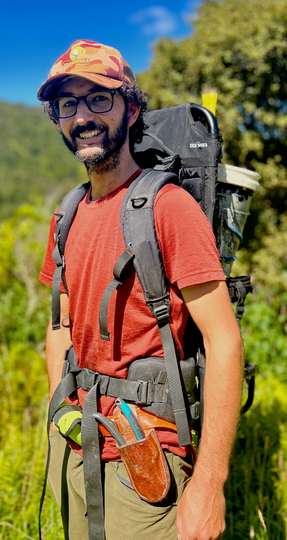
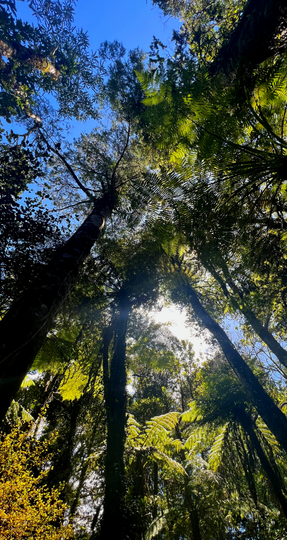
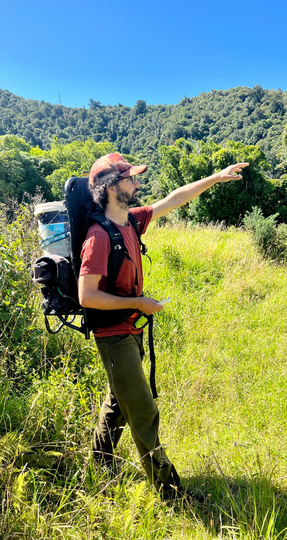
“I want to do everything I can to help the flora and fauna in this special place,” says Miro.
We’re trudging up a hill towards one of the highest peaks in the Valley, Maungataniwha. Miro is on his way to check his trapline. I knew I was in for a walk; I didn’t realise it was going to be uphill 97% of the time. It’s 27 degrees; it feels like 37. I’m sweaty. Miro doesn’t look at all fazed by the excursion. He’s not even wearing hiking boots; he’s wearing those shoes (would you call them shoes?) with the toes and the thinnest sole, “so I can feel the ground I’m walking on.”
On the way up, we stop many times so I can ask Miro questions about his trapline and the mahi he does out here (and also so I can catch my breath). Miro is gracious with his time. It usually takes him a good five or six hours to do his trapline, so my heavy breathing and I are probably slowing him down, but he doesn’t seem to mind.
Miro points out hillsides that, to the untrained eye, look like the forest on them has been there forever.
“When my dad bought this land in 1989, a lot of that hillside was bare grassland,” he says. “Dad has spent many years regenerating parts of the land and returning it to what it should always have been. He has worked very hard, and I guess a lot of that passion and love of the land has rubbed off on me.”
What stands out to me is just how in-tune with the ngahere Miro is. He’s a trapping contractor funded by Save the Kiwi through the Jobs for Nature scheme so technically his work revolves around kiwi conservation. But he says everything he does contributes to the overall biodiversity of the forest.
“The forest and the wildlife that live here all live in harmony – or at least that’s the goal,” he says. “Kiwi are the focus of our work but everything we do to help protect kiwi and create more habitat that’s safe for kiwi helps every other species that either currently lives here or used to live here and we’re trying to bring back.”
It’s quiet out here – blissfully quiet. But then it occurs to me that I can’t really hear any birdsong either.
“No, there’s not much life out here,” agrees Miro. “The rise of introduced predators over the years has wiped out huge numbers of native birds. But we’re slowly starting to see some of them return. Kererū are coming back, we’re hearing tūī more and more, and of course if you’re lucky you can hear some kiwi. That’s really motivating for me and the other contractors who look after their own traplines. We’re starting to hear birdsong return to the forest which drives us to catch even more pests.”
—
Established in 2015, Honeymoon Valley Landcare Trust was birthed out of a passion for the land and a common desire to restore its health and viability. In 2020, the Trust successfully applied to Save the Kiwi for Jobs for Nature funding to create the Kiwi Corridor Project. The project encompasses land from Honeymoon Valley towards neighbouring Otangaroa to the east and Mangamuka to the west, and at just past the halfway point of funding the Trust has increased their project area from 1,800 hectares to 7,000 hectares, including 153 kilometres of traplines – and counting.
While protecting kiwi is the short-term focus of the Jobs for Nature-funded project, improving overall biodiversity and creating local employment opportunities are the long-term goals. Operations revolve around trapping mustelids, encouraging responsible dog and cat ownership, implementing a weed action project, and maintaining and improving water catchment and water quality by supporting the neighbouring Nga Awa Peria Oruru River Project.
Honeymoon Valley Landcare Trust trustee Shayne Waldron says the uniqueness of the Jobs for Nature programme has allowed their project faster progress than it would have otherwise.
“In the past we’ve been able to purchase traps thanks to generous funders, but very few funders pay for labour,” Shayne says. “That’s what makes Jobs for Nature as a programme so different to other funders. Being able to hire contractors to come in to cut traplines and set traps while creating jobs for locals, has enabled us to expand much faster and larger than we’d been able to do, but in a way we’ve always hoped we’d be able to do.”
—
Miro is a meticulous trap-setter. He pays careful attention to how his trap is positioned and how a potential catch might engage with it.
“Lots of trappers act like their predators are just waiting to get caught,” he says. “They treat them like they’re suicidal, like they’ll wander into any old trap because they’re just waiting to die. And if they’re not catching anything, they reckon there’s nothing out there.
“These animals are really smart. They’re out there doing what they’re meant to be doing, it’s just that they’re in the wrong place doing it.
“To be a successful trapper, we need to get inside a stoat’s head, learn why they do certain things, understand what makes them tick, and do everything we can to attract them to a trap. It’s not magic. It’s not quick. But when you take your time, when you start to think like a predator, that’s when you’ll start catching them.”
There’s an air of anticipation before Miro takes the lid off his first trap. He’s hoping for a stoat. But … it’s empty.
“Ah well, that’s OK. We’ll just start over.”
He spends 10 minutes at the trap, cleaning it, clearing the entranceway, getting rid of cobwebs, making sure the trap is level.
“You want to catch the thing, you don’t want to frighten it,” he says as he rummages around for a stick to carefully position under the baseplate. “A wobbly trap that has any sort of movement in it will instantly scare off a stoat. That’ll make them trap-shy when they come across the next trap too. I want to give the animal the best chance at entering the trap, and me the best chance at catching it.”
Miro’s got fresh rabbit to rebait the trap with. He rubs a bloody leg around the entranceway to spread the scent before carefully placing it on the baseplate and placing the lid of the trap back in place.
“There,” he says as he stands up, stretches, and looks at a job well done. “There’s not much else I can do to make that trap any more appealing, so fingers crossed we catch something next time.”
The next trap, a double DOC 200, has a catch – two rats. One’s fresh; the other’s a bit messy.
“Rats aren’t my favourite things to catch, but now there are two less out there so it’s not a bad thing,” Miro says as he uses a pair of BBQ tongs to scrape the messy one out. “Stoats are our main focus. We haven’t seen any ferrets out here, although we know other projects that have, so I presume they’ll arrive eventually. In the meantime, we’re working hard on what we know and what we can do something about.”
—
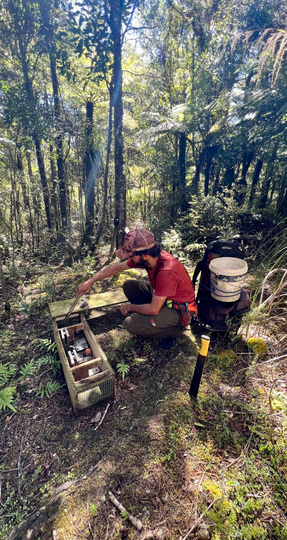
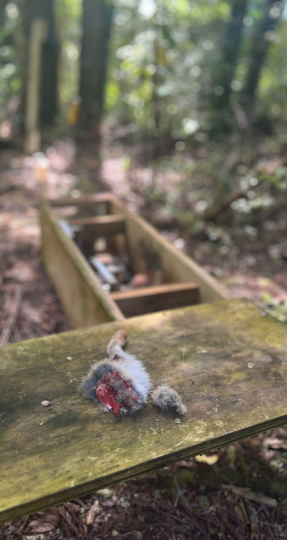
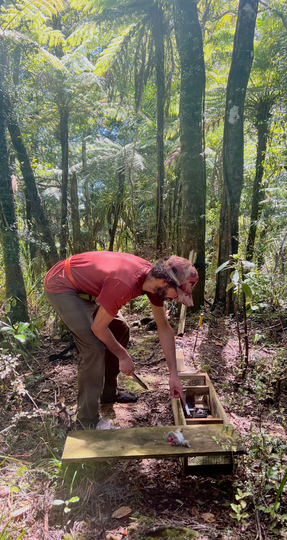
“My best day was when I caught seven or eight stoats in one day.”
“That must be a bittersweet feeling, right? Catching that many means there must be heaps out here, but also if you didn’t catch anything it wouldn’t be very motivating.”
“Yeah. It sucks when you come out and you’ve caught nothing. So much work goes into trapping. It’s a long walk, it’s a long day, and I spend a lot of time on each trap getting them just right, to make sure there’s as much chance as possible that they’ll catch something.”
“But would the ideal day be not to catch anything at all? Wouldn’t that indicate that what you’re doing is working?”
“No. You’re kidding yourself if you think there’s nothing out here if you happen to catch nothing. Trail cameras show that there are a lot of mustelids around. If you’re catching nothing, you need to up your trapping game.”
—
“Bernard Coogan is the Honeymoon Valley Landcare Trust’s project manager. Born and bred in Honeymoon Valley, Bernard now lives here with his young family so “our two sons can enjoy a similar upbringing to what I had”.
“The success of the project is completely down to the people we’ve got working with us – it’s certainly not down to my project management,” Bernard laughs. “Most of the people who are involved live in the project area. We have one trapper whose trapline starts from her back door. Everyone’s involved in it because we want to be. We live here, we’re invested in the future of the area, and we want to do what we can to improve it and see it thrive. Unlike other projects in Northland, we don’t struggle to get contractors to come in and do this sort of work because we’re already here.”
Bernard trusts his team to make the right decisions and encourages them to just have a go.
“Our contractors have a lot of freedom.,” he says. “They’re encouraged to experiment with different baits and techniques which gives them a lot of ownership and autonomy over the project. We all feed back via a Signal messenger group where we chat about what we’ve noticed on our traplines and what’s working and what’s not. It’s a great way to brag about our catches and have a bit of a competition between each other too.”
I tell Bernard about the seven or eight stoats Miro caught in a day.
“Oh, did he tell you how he caught them?” Bernard asks animatedly. “He dragged a rabbit carcass through the trees around where the trap was sitting to spread scent around more. That was something Save the Kiwi’s National Predator Control Advisor John Bissell taught us on one of his trips up here. Miro gave it a go just to see what would happen and it worked. It was great for him to be able to share his success with the rest of the team – a bit of healthy competition is always good!”
—
Stoats and rats aren’t the only introduced predators causing mayhem deep in Honeymoon Valley. Possums, pigs, and dogs are also serious problems.
This Maungataniwha Raetea Range Forest has virtually never had focused possum control, and it’s the most significant area of native rainforest in the far north of New Zealand. Many old canopy species such as northern rātā , taraire and pūriri are suffering from long term possum browse.
“We’ve got a few rātā trees out here but they’re particularly susceptible to possums,” Miro says, pointing out bare patches of vegetation in the valley below us where possums have stripped the branches clean. “We’re doing a lot of work on possum control, and while that’s not directly related to kiwi it has a lot to do with overall biodiversity of the forest.”
The same goes with wild pigs.
“Pig numbers have varied over the years in our management area, with some good local pig hunters keeping numbers down. Wandering dogs also scare pigs off, but that in itself is another issue.
“We’ve seen kiwi carcasses with bite marks down their backs. It’s an ongoing project to get local landowners to take ownership of their dogs. We host annual kiwi avoidance training workshops for our local pig hunters’ dogs and valley dogs, and dog awareness is something we’re always working on. But it’s discouraging when you see a dog on a trail cam and then you see the same dog on another one a few kilometres away the next night, and you wonder what damage they’ve caused in between.
“We’re working hard to get the wandering dog problem under control, but as a result pigs are coming back. Pigs don’t usually kill kiwi but they do destroy the undergrowth, damage trees, and compete for food. If they were to come across a kiwi burrow with eggs in it, they would likely destroy it.”
Dogs have always been somewhat of a problem throughout the Far North. Many local landowners are invested in the mahi that the Trust is doing. There are a handful that aren’t, though.
“We have trail cameras set up around the place that regularly pick up dogs,” Miro says. “Some of them can travel a long way in only a few hours. We’re fortunate that most people in our project area are onboard with the vision we have, but there are still pockets where dogs are a major issue and there are still people who don’t want to take responsibility for their dogs.”
—

Miro doesn’t live in the Valley these days, instead living and working in Kerikeri, roughly 90 minutes away, with his partner and almost-two-year-old son.
“Certainly, having my own son is motivating for me,” he says. “I can still remember when I was a kid and being able to hear kiwi calls almost every single night, and I’d love him to be able to experience that too one day.”
Miro visits the Valley a few times a month to check his trapline and help out where he can.
“Even if I wasn’t getting paid, I’d still come out here and do what I can to help the forest and the birdlife that’s here. I’m starting to see and hear the difference. Seeing my hard work paid off – that’s really rewarding.”
There’s a certain level of pride involved too.
“Honeymoon Valley is a massive area of native bush so it’s only natural that kiwi should live here,” he says. “How embarrassing would it be if we let kiwi die out here, but in tiny pockets of bush or in the middle of a clump of pampas in some other part of Northland they had a breeding pair.
“Kiwi have thrived here before. I think, as Honeymoon Valley residents, we have a responsibility to do everything we can to create habitat that’s safe for kiwi, protect the small numbers of kiwi that we still have here, and encourage them to come back.”
—
While the kiwi population in Honeymoon Valley itself has declined significantly, within the wider project area kiwi numbers seem to be healthier.
“When I was a kid I could hear kiwi from our house, but over the years I’ve noticed kiwi numbers drop off significantly,” says Bernard. “But over the hill at Otangaroa, one of our trappers can sit on her deck and hear kiwi calling most nights. So we know it can happen.”
Despite the success of their project thanks to Jobs for Nature funding from Save the Kiwi, there’s still a long way to go before safe habitat is restored and created.
“Look, a complete culture change around dogs would certainly help kiwi populations up here, not just in our project area but in the wider Far North,” says Bernard. “You’ve got some owners who are responsible, then you’ve got others who could do better at keeping their dogs under control.
“But then you’ve got other people who own loads of dogs but don’t take any responsibility for them at all. But these people are also irresponsible in all areas of their lives, so that makes it really tough to make any meaningful impact.”
When Shayne imagines Honeymoon Valley in 50, even 100 years, he hopes the forest’s biodiversity has significantly improved and the people who live there are more engaged and invested.
“I hope Honeymoon Valley will have large areas of wilderness with walking tracks and traplines through it,” he says. “One of the primary threats to achieving that is land use, in particular subdivisions and pine forestry. I hope we’ll get on top of weeds like our wild ginger infestations which, without community education and engagement, has the real potential to lead to loss of forest which I believe we will see in some parts of the country. And I hope that kiwi populations and other birdlife will increase and start to thrive, especially in places where the forest has been silent for so long.”
In the meantime, Bernard, Shayne, Miro, and their tribe of trappers will continue scaling the hills across their project area, testing baits and trapping methodology, and probably dragging more rabbit carcasses through the bush. They’ll continue removing stoats, rats and possums from the ngahere in a mission to create safer habitat for kiwi. And they’ll pass their skills down to the younger generations who live in the project area and encourage them to do what they can to improve the health of the forest too.
“I certainly hope that my grandchildren will be able to hear kiwi calling in Honeymoon Valley one day,” says Bernard. “At the very least, I’d like to hope that we can protect the areas where there are still kiwi now. We are privileged to be the guardians of the land here and we’ll continue doing what we can to protect and restore it.”
